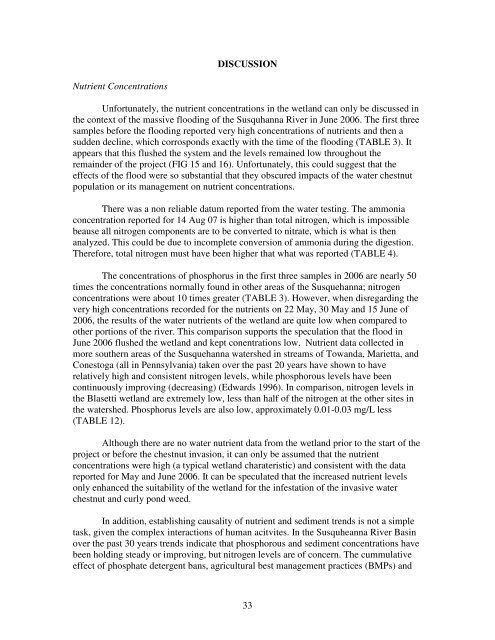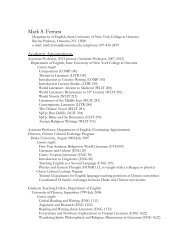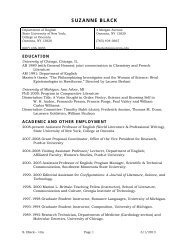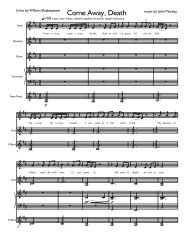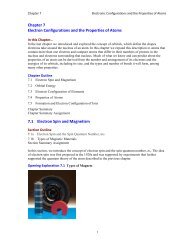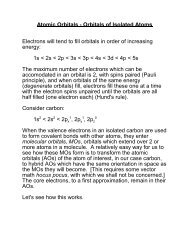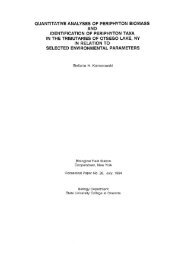Water Chestnut (Trapa natans L.) Infestation in the ... - SUNY Oneonta
Water Chestnut (Trapa natans L.) Infestation in the ... - SUNY Oneonta
Water Chestnut (Trapa natans L.) Infestation in the ... - SUNY Oneonta
Create successful ePaper yourself
Turn your PDF publications into a flip-book with our unique Google optimized e-Paper software.
Nutrient Concentrations<br />
DISCUSSION<br />
Unfortunately, <strong>the</strong> nutrient concentrations <strong>in</strong> <strong>the</strong> wetland can only be discussed <strong>in</strong><br />
<strong>the</strong> context of <strong>the</strong> massive flood<strong>in</strong>g of <strong>the</strong> Susquhanna River <strong>in</strong> June 2006. The first three<br />
samples before <strong>the</strong> flood<strong>in</strong>g reported very high concentrations of nutrients and <strong>the</strong>n a<br />
sudden decl<strong>in</strong>e, which corrosponds exactly with <strong>the</strong> time of <strong>the</strong> flood<strong>in</strong>g (TABLE 3). It<br />
appears that this flushed <strong>the</strong> system and <strong>the</strong> levels rema<strong>in</strong>ed low throughout <strong>the</strong><br />
rema<strong>in</strong>der of <strong>the</strong> project (FIG 15 and 16). Unfortunately, this could suggest that <strong>the</strong><br />
effects of <strong>the</strong> flood were so substantial that <strong>the</strong>y obscured impacts of <strong>the</strong> water chestnut<br />
population or its management on nutrient concentrations.<br />
There was a non reliable datum reported from <strong>the</strong> water test<strong>in</strong>g. The ammonia<br />
concentration reported for 14 Aug 07 is higher than total nitrogen, which is impossible<br />
beause all nitrogen components are to be converted to nitrate, which is what is <strong>the</strong>n<br />
analyzed. This could be due to <strong>in</strong>complete conversion of ammonia dur<strong>in</strong>g <strong>the</strong> digestion.<br />
Therefore, total nitrogen must have been higher that what was reported (TABLE 4).<br />
The concentrations of phosphorus <strong>in</strong> <strong>the</strong> first three samples <strong>in</strong> 2006 are nearly 50<br />
times <strong>the</strong> concentrations normally found <strong>in</strong> o<strong>the</strong>r areas of <strong>the</strong> Susquehanna; nitrogen<br />
concentrations were about 10 times greater (TABLE 3). However, when disregard<strong>in</strong>g <strong>the</strong><br />
very high concentrations recorded for <strong>the</strong> nutrients on 22 May, 30 May and 15 June of<br />
2006, <strong>the</strong> results of <strong>the</strong> water nutrients of <strong>the</strong> wetland are quite low when compared to<br />
o<strong>the</strong>r portions of <strong>the</strong> river. This comparison supports <strong>the</strong> speculation that <strong>the</strong> flood <strong>in</strong><br />
June 2006 flushed <strong>the</strong> wetland and kept conentrations low. Nutrient data collected <strong>in</strong><br />
more sou<strong>the</strong>rn areas of <strong>the</strong> Susquehanna watershed <strong>in</strong> streams of Towanda, Marietta, and<br />
Conestoga (all <strong>in</strong> Pennsylvania) taken over <strong>the</strong> past 20 years have shown to have<br />
relatively high and consistent nitrogen levels, while phosphorous levels have been<br />
cont<strong>in</strong>uously improv<strong>in</strong>g (decreas<strong>in</strong>g) (Edwards 1996). In comparison, nitrogen levels <strong>in</strong><br />
<strong>the</strong> Blasetti wetland are extremely low, less than half of <strong>the</strong> nitrogen at <strong>the</strong> o<strong>the</strong>r sites <strong>in</strong><br />
<strong>the</strong> watershed. Phosphorus levels are also low, approximately 0.01-0.03 mg/L less<br />
(TABLE 12).<br />
Although <strong>the</strong>re are no water nutrient data from <strong>the</strong> wetland prior to <strong>the</strong> start of <strong>the</strong><br />
project or before <strong>the</strong> chestnut <strong>in</strong>vasion, it can only be assumed that <strong>the</strong> nutrient<br />
concentrations were high (a typical wetland charateristic) and consistent with <strong>the</strong> data<br />
reported for May and June 2006. It can be speculated that <strong>the</strong> <strong>in</strong>creased nutrient levels<br />
only enhanced <strong>the</strong> suitability of <strong>the</strong> wetland for <strong>the</strong> <strong>in</strong>festation of <strong>the</strong> <strong>in</strong>vasive water<br />
chestnut and curly pond weed.<br />
In addition, establish<strong>in</strong>g causality of nutrient and sediment trends is not a simple<br />
task, given <strong>the</strong> complex <strong>in</strong>teractions of human acitvites. In <strong>the</strong> Susquheanna River Bas<strong>in</strong><br />
over <strong>the</strong> past 30 years trends <strong>in</strong>dicate that phosphorous and sediment concentrations have<br />
been hold<strong>in</strong>g steady or improv<strong>in</strong>g, but nitrogen levels are of concern. The cummulative<br />
effect of phosphate detergent bans, agricultural best management practices (BMPs) and<br />
33


